HTIRC E-NEWSLETTER – May 2016
Volume 9 Issue 1
Articles in this issue:
- Robert Wagner Named Head of Forestry and Natural Resources
- Thousand Cankers Disease – Update & Should I Sell Walnut?
- New Publication Explores the Genome of Fungus Associated with Thousand Cankers Disease
- Recovering Oaks and Blight-Resistant American Chestnut: From Non-Native Conifer Stands to Hardwood Forest
- Persian Walnut Trees
- Reforestation, Nurseries, & Genetic Resources (RNGR) Site Provides Reference and Resources
- Analysis of Figured Wood at the Genome Level
- HTIRC Graduate Student Award Winners
Welcome to this issue of the Hardwood Tree Improvement and Regeneration Center E-newsletter. The HTIRC is committed to enhancing the productivity and quality of Central Hardwood Region trees and forests for the economic and environmental benefits they provide. Scientists at the HTIRC are using conventional tree improvement breeding as well as molecular and genetic technologies to improve the wood quality, growth characteristics, and insect and disease resistance of trees like black walnut, black cherry, red and white oaks, butternut and American chestnut. Research in tissue culture, tree nursery practices, tree plantation establishment and management, and Central Hardwoods silvicultural systems is aimed at increasing the regeneration success rate for high quality hardwood trees and forests. Some interesting and unusual research areas include examining the potential for propagating trees with “figured” wood: birds-eye maple or curly walnut; and breeding trees that will be an economical source of bio-fuels. Twice per year we will attempt to provide interesting and useful information on Central Hardwood trees and forests, as well as sources for additional information and assistance. Please pass this newsletter along to others who may enjoy or benefit from the information provided. If you would like a closer look at the HTIRC, please visit our web site at: http://www.htirc.org.
Dr. Robert Wagner named Head of Forestry and Natural Resources
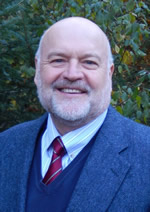
Robert Wagner, Henry W. Saunders Distinguished Professor in Forestry and Director of the Center for Research on Sustainable Forests (CRSF) and Cooperative Forestry Research (CFRU) at the University of Maine, has been appointed professor and head of Purdue’s Department of Forestry and Natural Resources, effective October 1. He succeeds Rob Swihart, who is returning to his faculty role after serving as department head since 2004. Dr. Wagner received his bachelor’s degree in forest management from Utah State University, his master’s in forest ecology/ silviculture from the University of Washington, and his PhD in silviculture/vegetation management from Oregon State University. He served as a program leader and senior scientist at the Ontario Forest Research Institute in Ontario Canada before joining the faculty in the School of Forest Resources at the University of Maine. At Maine he served as Director of the Cooperative Forestry Research Unit, Associate Director of the Forest Bioproducts Research Institute, and Director of the School of Forest Resources prior to his appointment as Distinguished Professor and Director of the Centers. “I could not be more excited about the future of the Forestry and Natural Resources department under Dr. Wagner’s leadership” said Dean Jay Akridge. “I also want to say thank you and express my deepest appreciation to Dr. Rob Swihart for twelve great years of service as Head of Forestry and Natural Resources. He has been a tremendous leader for the department.”
Reprinted from April 2016 Purdue Agriculture INFOCUS
Thousand Cankers Disease – Update & Should I Sell Walnut?
The article below, by the Indiana State Entomologist and Forest Health Specialist Phil Marshall provides an update on the status of Thousand Cankers Disease in Indiana and recommendations for landowners concerned about their walnut trees. Although targeted to Indiana, the recommendations have relevance for much of the native black walnut range. For additional information on Thousand Cankers Disease, visit www.thousandcankers.com.
Thousand Cankers Disease – Update & Should I Sell Walnut?
Recently, questions and concerns have come to the Division of Forestry from forest landowners and Consultant Foresters regarding the sale of black walnut trees now, because of Thousand Cankers Disease (TCD).
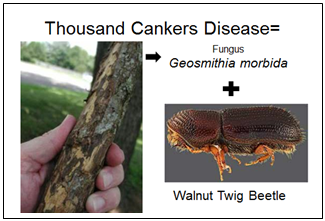
First, an update on the status of TCD in Indiana.
The Divisions of Entomology & Plant Pathology and Forestry have conducted TCD surveys since 2011 following the first confirmed detection of TCD in the eastern United States – Knoxville, TN August 2010.
The annual surveys include two visual surveys for symptomatic trees and a trapping survey for the Walnut Twig Beetle (WTB), the confirmed vector of the TCD fungus, Geosmithia morbida.
One visual survey occurs in 10 urban areas/cities each year. The other visual survey is gypsy moth trap tenders reporting walnut trees (healthy or with dieback) near each trap location.
In 2015, the urban areas/cities survey examined 1,431 walnut trees and the trap tenders reported 842 walnut trees. Of these only 26 had dieback and none were confirmed with TCD. Since 2011 over 40 urban areas/cities totaling over 3,700 walnut trees and over 5,200 walnut trees reported by trap tenders have been surveyed and less than 2% reported dieback and none had TCD.
The WTB survey involves setting traps baited with the WTB lure. A detection survey sets traps at high risk sites (sawmills, veneer mills, log consolidation yards, green waste sites and along the Ohio border to Butler County Ohio). A delimit survey is conducted at the sawmill in Franklin County and the walnut plantation at Yellowwood State Forest in Brown County due to the detection of WTB and Geosmithia morbida, respectively, at these locations.
In 2015, 249 traps were placed in the detection and delimit surveys. 2,592 samples were examined from the traps. The only detection of WTB was from traps at the sawmill in Franklin County.
Results of the survey efforts are:
TCD has NOT been detected and confirmed from a black walnut tree in the state of Indiana.
There are NO dead or dying black walnut trees in Indiana from TCD.
There is NO widespread TCD mortality in Indiana and none is expected in the near future.
The components of TCD – WTB and Geosmithia morbida – have been detected in Indiana.
WTB has been detected in traps NOT in standing trees.
Geosmithia morbida has been detected from a weevil, Stenomimus pallidus, which was collected from a study tree in the Yellowwood State Forest plantation.
There are NO TCD infected walnut trees in the Yellowwood State Forest Plantation.
Also, there are NO reports of widespread walnut mortality from TCD in the infested states of Tennessee, Virginia, North Carolina, Maryland, Pennsylvania and Ohio.
Therefore, if you are approached to sell your black walnut trees now because the “Walnut Disease” (TCD) is coming and you should sell before it gets to your woods, the response and recommendation is to contact your consulting forester or district forester for advice, follow your current management plan and do not sell the walnut just because of TCD.
I do not anticipate rapid and widespread mortality of walnut once TCD is confirmed from an Indiana black walnut tree.
For more information, visit http://www.in.gov/dnr/entomolo/6249.htm or also contact
Phil Marshall, Forest Health Specialist/State Entomologist, pmarshall@dnr.in.gov
Division of Entomology & Plant Pathology, 402 W. Washington St. Rm 290W, Indianapolis, IN 46204
Division of Forestry, Vallonia State Nursery, 2782 W. Co. Rd. 540S, Vallonia, IN 47281
317-232-4189 Indy, 812-358-3621 Vallonia, 812-595-2740 mobile
New Publication Explores the Genome of Fungus Associated with Thousand Cankers Disease
Dr. Keith Woeste cooperated with Kirk Broders of Colorado State University and Taruna Schuelke and Anthony Westbrook of the University of New Hampshire to publish the draft genome of Geosmithia morbida, the fungus associated with Thousand Cankers Disease of black walnut. Dr. Woeste states “This publication, and others to follow, will be useful to those who hope to control TCD because it provides tools to understand the genetic diversity of the fungus, allows us to understand the evolution of the fungus into a pathogen, and allows deeper insight into the process of disease in walnut by helping to identify the genes involved during various stages of the disease cycle. This was the result of a collaboration that grew out of my work with Ned Tisserat and Kirk Broders on butternut canker.”
The citation for this publication is:
Schuelke et al. (2016), De novo genome assembly of Geosmithia morbida, the causal agent of thousand cankers disease. PeerJ 4:e1952; DOI 10.7717/peerj.1952
Recovering Oaks and Blight-Resistant American Chestnut: From Non-Native Conifer Stands to Hardwood Forest
By Jenny Lesko, MS Graduate Student
American chestnut and oak species are more valuable than most other Midwestern tree species because of their preferred wood color and grain pattern, provide large amounts of food for wildlife, and they produce high quality timber.
American chestnut, a once-important eastern US forest tree, was decimated by chestnut blight fungus beginning in the early 1900s. Blight-resistant hybrids developed with backcross breeding by The American Chestnut Foundation will soon be available, so there is potential to reintroduce chestnut into its native range.
Also failing to regenerate in most eastern forests are oaks. Rather than disease, oaks are failing due to lack of fire, deer browse preference, and competition from faster-growing species. Old planted pine plantations provide an opportunity for restoration plantings of chestnut and oak because they share similar environmental preferences with pine, such as acidic and nutrient-poor soil, in comparison to most other native tree species. These large areas of Midwestern non-native pine plantations, 60,000 hectares in Indiana, Illinois, and Ohio, will soon decline without regenerating. Therefore, these plantations are ideal for planting species that are endangered or failing to regenerate before less desirable species replace pine.
In research plots near Purdue University, American chestnut and northern red oak seedlings were planted underneath pine canopy in 2014. Fences to keep out deer were installed, and all midstory trees were removed. The seedlings’ growth rates have been measured for two years so far under three types of management practices including canopy manipulation, weeding, and fertilization. Pine canopy manipulations included clear cut, partial canopy removal, and full canopy.
Seedlings are expected to grow best in partial canopy removal because the remaining pines reduce temperature variability (i.e. protect from frost damage), reduce weeds compared to the clear cut manipulation, and allow enough sunlight into the understory. Next, seedlings are expected to grow better in weeded than unweeded areas because of less competition. Finally, seedlings should perform best when fertilized with 60g of 12-14 month controlled release fertilizer, compared to 30g and 0g. Weed control will be more important in clear cut than full canopy treatments due to shading.
Preliminary results support these expectations. So far, American chestnut seedlings grew significantly more than oaks, though oaks are known to invest more heavily in belowground biomass in the first few years. Survival was about 90%, and chestnuts were slightly more likely to survive than oaks. American chestnut exhibited greatest stem volume increase in the partial canopy removal treatment while red oaks had the greatest growth in the clear cut, though their performance in partial canopy removal areas was nearly equal to that in clear cut. Chestnut seedlings had greater rates of photosynthesis in clear cut areas, and red oak showed no differences in photosynthesis rate between treatments. Weeding over one growing season had positive effects on American chestnut growth, and continued weeding will likely increase growth of both species.
American chestnut and northern red oak seedling ‘success’ is measured by survival, height, root collar diameter, photosynthesis rate, plant water status, and leaf nutrient analysis. To quantify differences in canopy manipulations and weeding treatments measurements include temperature, light intensity, vegetation functional composition, and soil physical and chemical characteristics. This research project can inform restoration of oak and chestnuts in pine plantations on public and private lands throughout the Midwest. These methods can be extrapolated to underplanting other hardwood species such as walnut or, in the distant future, ash. Other less productive plantations and environments can similarly be transformed to useful and more valuable forest.

Figure 1: View from full canopy, looking toward clear cut and partial canopy removal manipulations.
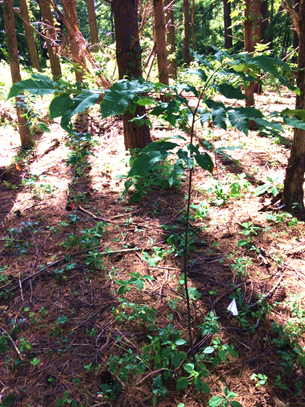
Figure 2: Three year old American chestnut hybrid growing underneath pine canopy.

Figure 3: Three year old northern red oak growing underneath pine canopy.
Persian Walnut
If Persian walnut trees could talk, they might tell of the numerous traders who moved along the Silk Roads’ thousands of miles over thousands of years, carrying among their valuable merchandise the seeds that would turn into the mighty walnut forests that are spread across Asia.
Purdue University research shows that ancient languages match up with the genetic codes found in Persian walnut (Juglans regia) forests, suggesting that the stands of trees seen today may be remnants of the first planned afforestation known in the world.
In a paper published in the journal PLoS One, Keith Woeste, a research geneticist for the U.S. Department of Agriculture’s Forest Service and a Purdue adjunct assistant professor of forestry, found that the evolution of language and spread of walnut forests overlapped over wide swaths of Asia over thousands of years. He believes as traders traversed the Silk Roads, connecting Eastern Europe and Africa with far-East Asia, they purposely planted walnut forests as a long-term agricultural investment.
“It was always assumed that there were wild forests of walnuts, like you’d find wild oak and maple forests here in the U.S.,” said Woeste, who published the research with colleagues from the United Kingdom and Italy. “But what we had previously considered to be these wild walnut trees out in the middle of Asia were probably planted there.”
Woeste said that while sampling walnut forests from 39 sites across Asia, his team noticed that the word for “walnut” was similar in many languages. That piqued their interest, so when genetic maps of the samples showed uncharacteristic relationships, they started looking at the link between genetics and languages.
If forests spread naturally, scientists would expect that genetic relatedness would spread in more concentric patterns. But Woeste said walnut genetics are related in long bands that spread east and west. For example, Woeste says walnuts in eastern Iran are closely related to walnuts in the Himalayas.
That suggests to him that traders were carrying walnuts along the Silk Roads. And those traders had likely been keeping walnuts from the best trees, selecting for genes that gave the trees desired characteristics for nuts and wood.
“Humans are always narrowing down genetic diversity to obtain a usable and more valuable crop,” Woeste said.
Much like crops evolve, languages also change over time. For instance, Spanish, French and Italian are considered Romance languages, having evolved from Latin. As populations split from each other, their languages changed, making those new languages children of the original.
Having noticed the similarities in the word for “walnut” among several languages, Woeste and his colleagues grouped the languages currently spoken from the places where they sampled walnuts and traced the languages back to their ancestors. They found that the evolution of languages overlapped with the spread of walnut genetics.
Woeste believes this shows that as people moved along the Silk Roads and traded, they specifically selected walnuts and traded them along their routes. Instead of having just a few domestic trees, those who obtained walnuts likely put effort into creating walnut forests that could be used for food and wood.
“The factors that contribute to language being dispersed in Asia are the same as the way walnuts were dispersed,” Woeste said. “It was the unique characteristics of walnut being useful for its wood and nuts that encouraged people to transport it, use it and then plant it as a forest as a long-term investment.”
The European Community, under the framework of the Seventh Framework Programme under the Marie Curie Actions’ Co-funding of Regional, National and International Programmes, called COFUND, supported the research.
The research is available at http://journals.plos.org/plosone/article?id=10.1371/journal.pone.0135980
Writer: Brian Wallheimer, 765-532-0233, brian.wallheimer@gmail.com
Source: Keith E. Woeste, 765-496-6808, woeste@purdue.edu
Reforestation, Nurseries, & Genetic Resources (RNGR) Site Provides Reference and Resources
If you are looking for a native plant or tree seedling nursery in your state, need to figure out how to collect, germinate and grow native tree seeds, or are looking for practical information on reforestation, there is a website that can help. The Reforestation, Nurseries, & Genetic Resources (RNGR) website, which is supported by the USDA Forest Service and Southern Region Extension Forestry, is an information clearinghouse designed to provide professionals and citizens easy access to information and resources.
Some resources that may be useful to landowners include the National Nursery and Seed Directory, http://www.rngr.net/resources/directory.The searchable directory provides product and contact information for businesses that support propagation of forest and native plant materials in the US and Canada. If you are planning to plant some trees and shrubs for conservation purposes, or are looking for native plant and seed sources, the directory is a good first stop to find sources in your area.
Landowners who would like to germinate and grow trees and shrubs from seed will find the Woody Plant Seed Manual, http://www.rngr.net/publications/wpsm an invaluable resource for collecting, cleaning, and sowing seeds from most woody plants native to North America. Several other guides are available covering processing and storing seeds. Professionals will find several technical manuals and a wide variety of research and practical references in a wide set of nursery practice and regeneration topics. Meeting proceedings and upcoming events are also included. A special section highlights the Intertribal Nursery Council and provides manuals and meeting announcements for native peoples involved in plant production, http://www.rngr.net/inc.
If you are involved with planting seed or seedlings to regenerate native plants, there is almost certainly some information for you at the RNGR website, http://www.rngr.net/.
Carrie Pike
USDA Forest Service, Northeast Area Regeneration Specialist & Adjunct Assistant Professor
cpike@fs.fed.us or pikec@purdue.edu
Analysis of Figured Wood at the Genome Level
By Dr. Shaneka Lawson, USDA Forest Service Plant Physiologist
Figure formation in hardwoods has long been thought of as either a curse or a delightful surprise. At the HTIRC, an effort to identify how figure is formed has been initiated. As a clarifying point, the figure being examined here is not tension wood, crotch wood, spalted wood, or burl wood sections.
The first species to be analyzed at the genome level within the HTIRC is the tropical hardwood tree Acacia koa. The primary goal is to determine what cues within the genome are being followed to induce the formation of figure. Wood RNA has been extracted, sequenced, and analyzed. To date, a number of genes have been shown to differ significantly (p < 0.01; p < .001) in expression between highly figured, lightly figured, and non-figured samples.

Examples of some of the patterns of figure seen in Acacia koa and the products made from koa wood.
Anecdotal evidence has been spread about Acacia koa and a number of other tree species regarding the growth processes taking place within the tree that lead to figure. During the course of this project I have heard a number of varying myths regarding figured trees with respect to color, leaf shape, and location. It has also been said that planting a tree on a hillside that receives a lot of wind will lead to figure formation. While technically that may be true for the formation of tension wood, that circumstance is not the process being investigated here. This project will indicate exactly which genes are being differentially expressed in those trees with figure compared to those without and will hopefully shed some light on the events that are involved in the formation of figure in Acacia koa.
As soon as this latest work is published, it will be summarized and highlighted here! Stay tuned.
HTIRC Graduate Student Award Winners
Mekala Sundaram won first place and Jun-Hyung Lee won second place for the Ph.D. research category and Melody Mount received an honorable mention for the M.S. research category for their posters at the annual Purdue Forestry and Natural Resources Research Symposium in April, 2016. Mekala and Jun join a long list of HTIRC graduate students award winners for their research work. The Fred M. van Eck Graduate Assistantships have been a powerful tool to recruit high-quality students and support important research at the HTIRC.
A list of posters presented follows:
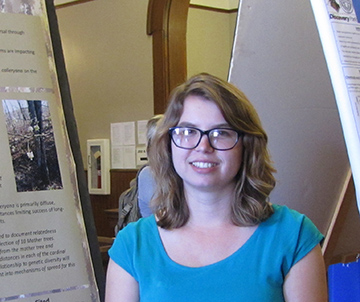
K. Dunn, M. Saunders, and M. Jenkins
Ecology and Dispersal of Pyrus calleryana in a Central Hardwood Forest
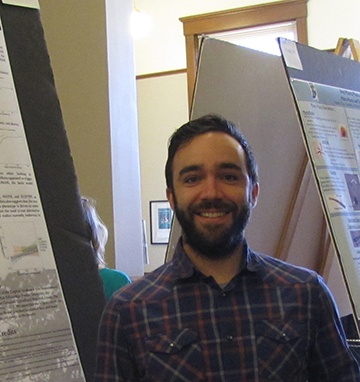
K. Earnshaw, M.V. Mickelbart, and D. Jacobs
Triggers for Acacia koa Development: A Function of Time or Size? The Role of Microclimate and Implications for Management
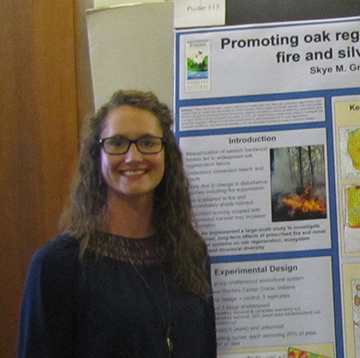
S.M. Greenler and M.R. Saunders
Promoting Oak Regeneration through Prescribed Fire and Silviculture: Early Results
M.Mount, A. Ebrahimi, J. McKenna, N. Lichti, and D.F. Jacobs
Quantifying Wind-Dispersed Chestnut Blight Spores with rtPCR

T.J. Stewart, M.E. McDermott-Kubeczko, J. Juzwik, and M.D. Ginzel|
Curculionid Beetles as Phoretic Vectors of Geosmithia morbida – the Causal Agent of Thousand Cankers Disease
.jpg)
M.Sundaram and R.K. Swihart
Seed Dormancy Detection by Eastern Gray Squirrels (Sciurus carolinensis)
Additionally, Kyle Earnshaw was awarded the Charles H. Michler Scholarship for the Outstanding Graduate Student Researcher in Forest Biology (April 2016) and Jennifer Lesko was awarded the Fischer Forestry Fund Graduate Scholarship (April 2016) at the Spring Awards program for the Purdue Department of Forestry and Natural Resources.
Congratulations!
(Rob Swihart presented Kyle Earnshaw with the Charles H. Michler Scholarship for the Outstanding Graduate Student Researcher in Forest Biology)
Have questions about tree planting? This series of publications can be viewed or downloaded free of charge. Planting and Care of Fine Hardwood Seedlings
van Eck Scholarships available for graduate research with the HTIRC.
Ask the HTIRC: email Lenny Farlee with your tree planting and forest management questions and we’ll help you find the answers.
